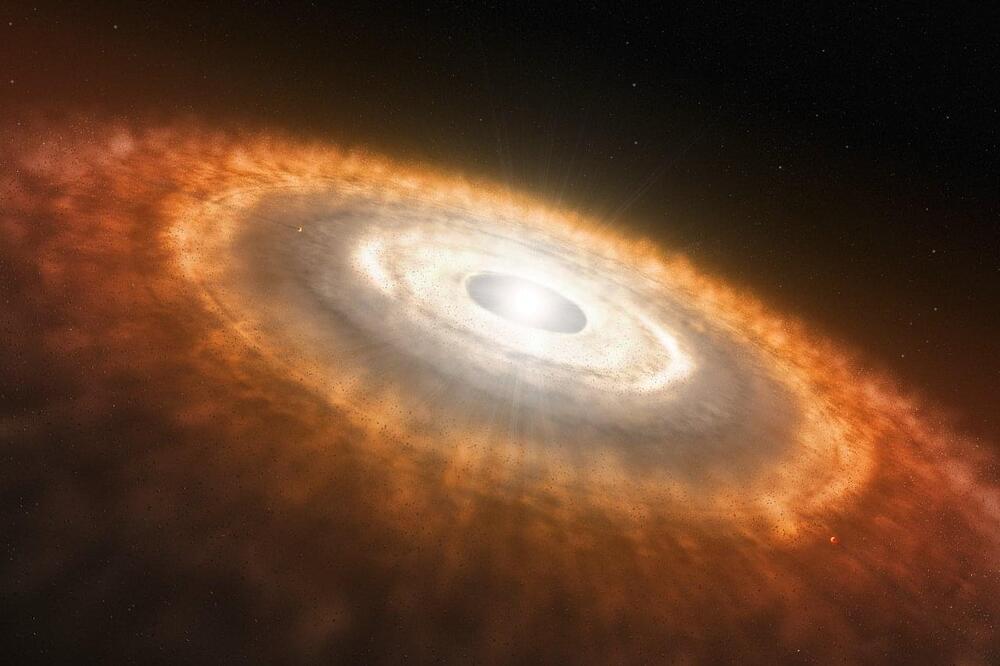Aging binary systems could be giving birth to second-generation planets.
When a Sun-like star exhausts the helium fuel in its core, it enters its death throes. Starved for fuel, it swells to a red giant, likely swallowing its innermost planets, and begins burning scraps of leftover hydrogen to helium. Periodically, these helium ashes reignite, causing the star to once again burn brightly and throw off its outer layers into space.
This volatile phase of stellar life is called the asymptotic giant branch (AGB). With so much happening, it would seem like a terrible environment for the delicate process of forming planets. But over the past couple decades, astronomers have begun to suspect that under some circumstances, this stage could result in a new disk of material surrounding the star, giving rise to a second generation of planets.
Now, an analysis published Feb. 1 in Astronomy and Astrophysics gives some of the first observational hints that dying stars in binary systems could be giving birth to new planets. Roughly 10 percent of the post-AGB stars they studied are surrounded by disks of gas and dust that have gaps and cavities in them, a telltale sign that planets are possibly present — or forming — in them.
